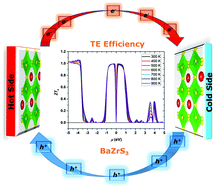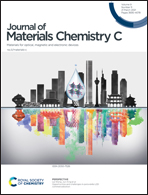Examining the electron transport in chalcogenide perovskite BaZrS3†
Abstract
Orthorhombic BaZrS3 is a potential optoelectronic material with prospective applications in photovoltaic and thermoelectric devices. While efforts exist on understanding the effects of elemental substitution and material stability, fundamental knowledge on the electronic transport properties are sparse. We employ first principles calculations to examine the electronic band structure and optical band gap and interrogate the effect of electron transport on electrical and thermal conductivities, and Seebeck coefficient, as a function of temperature and chemical potential. Our results reveal that BaZrS3 has a band gap of 1.79 eV in proximity of the optimal 1.35 eV recommended for single junction photovoltaics. An absorption coefficient of 3 × 105 cm−1 at photon energies of 3 eV is coupled with an early onset to optical absorption at 0.5 eV, significantly below the optical band gap. The carrier effective mass being lower for electrons than holes, we find the Seebeck coefficient to be higher for holes than electrons. A notable (≈1.0 at 300 K) upper limit to the thermoelectric figure of merit, obtained due to high Seebeck coefficient (3000 μV K−1) and ultra-low electron thermal conductivity, builds promise for BaZrS3 as a thermoelectric.



 Please wait while we load your content...
Please wait while we load your content...
